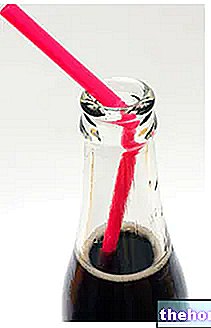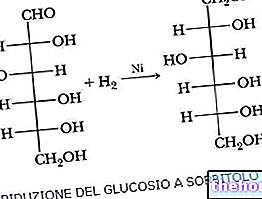So is invert sugar
Inverted sugar is a food product consisting of a mix of glucose and fructose in equal parts, with more or less important traces of sucrose. In fact, invert sugar is obtained by enzymatic or chemical hydrolysis of traditional sugar (sucrose), effectively replicating what happens in our small intestine.

We speak of invert sugar because, while in aqueous solution sucrose is a dextrorotatory compound (rotates the plane of polarized light to the right), the mixture of glucose and fructose is left-handed (rotates the plane of polarized light to the left).
Where it is found and culinary applications
Inverted sugar is naturally present in honey and in the most sugary fruits (especially in grape juice), while it is added at an industrial level in the preparation of various baked goods and confectioners. Among the numerous advantages of invert sugar compared to the traditional one, First of all we remember the greater sweetening power, about 30% higher than sucrose. Inverted sugar, moreover, is less prone to crystallization and has the ability to retain moisture; from a physical point of view, it is characterized by a white color with straw-yellow shades and creamy structure. The significant content in simple sugars and above all in fructose produces an early caramelization in baked goods; this prerogative also translates into a shorter cooking time, with softer, more fragrant and even more golden and appetizing finished products.
The aforementioned characteristics make invert sugar particularly useful in the production of ice cream (lowers the freezing point), biscuits, pastry creams, spreadable chocolate and frozen and non-frozen baked goods (in which it hinders drying). Inverted sugar can also be used in intravenous infusions for parenteral nutrition.
Making invert sugar at home
Industrial invert sugars ensure compliance with rigorous quality standards, which make them more or less suitable for use in specific preparations according to the glucose - fructose - sucrose ratio. In any case, invert sugar can also be easily produced at home by exploiting recipes similar to the one we are going to illustrate.
Prepare a syrup by mixing sugar and water in a two to one ratio; this means that for every 2 kg of sugar a liter of water will be added. At this point add 4.5 grams of citric acid or ascorbic acid for each kg of sugar used, bringing everything to a boil for about thirty minutes. If natural acids such as citric and ascorbic are not available, lemon juice can be used in an amount of three tablespoons per kg of sugar.
The various recipes present in books and websites differ in boiling time and quantity of added acids; in fact, by increasing the quantity of acid (up to a certain limit) the boiling time can be reduced; for the same reason, invert sugar can be produced by decreasing the acid and prolonging the cooking time, which must in any case be less than one hour.
Other Foods - Sweeteners Acesulfame K Aspartame Sugar beet Sugar cane Sodium cyclamate Dextrose Sweeteners Erythritol Fructose Maltose Mannitol Molasses Saccharin Saccharose Maple syrup Agave syrup Fructose syrup Glucose syrup Sugar sorbitol Articles Stevia Sucralitol sugar SWEETENERS Categories Alcoholic Foods Meat Cereals and derivatives Sweeteners Sweets Offal Fruit Dried fruit Milk and Legumes Oils and Fats Fish and fishery products Salami Spices Vegetables Health recipes Appetizers Bread, Pizza and Brioche First courses Second courses Vegetables and Salads Sweets and Desserts Ice cream and sorbets Syrups, liqueurs and grappas Basic Preparations ---- In the Kitchen with leftovers Carnival recipes Christmas recipes Light diet recipes tici Recipes for the Holidays Recipes for Valentine's Day Vegetarian Recipes Protein Recipes Regional Recipes Vegan Recipes

.jpg)


























